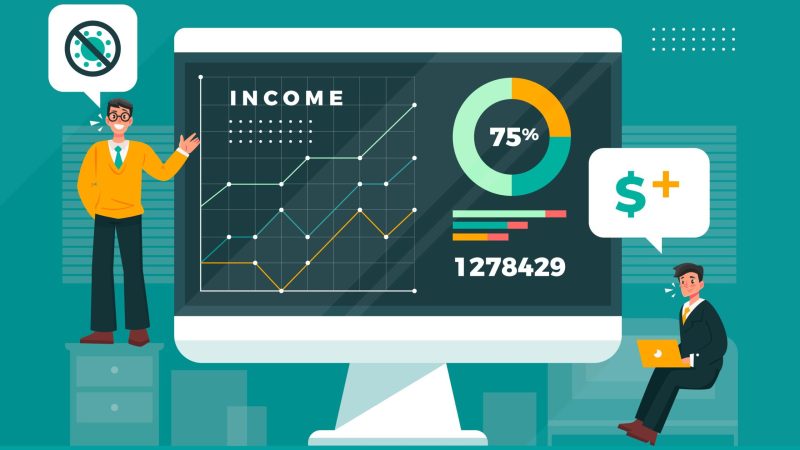Think about how much you may need to stand out in an industry that, according to Statista, is expected to hit $4.32 trillion in 2025. Well, it’s quite apparent that you may need significant resources to distinguish yourself. But thankfully, by paying attention to customer experience, you can improve retention and conversion rates and get ahead of your competitors. Keep reading to learn how brands are doing it.
The popularity of responsive designs
Recent approximations show that more than 90% of the world’s population owns smartphones. And they don’t just own them for the sake of it – they actually use them to do almost everything. And as a forward-thinking business, you don’t want to remain indifferent to such global trends.
That’s why many companies, including real money casinos, have adopted responsive websites to allow seamless mobile usage. BusinessDashers estimates their figure to be about 90%. Responsive designs have become common because they easily adapt to different screen sizes and devices, including smartphones. Of course, most consumers expect your mobile website to work just as well or even better than its desktop version.
This is where responsiveness in design comes in. Plus, modern consumers are very intolerant of negative website experiences. Just a single experience could cause about one in three to never return. Also, you stand the risk of maintaining a negative reputation because these customers will rarely keep quiet about those encounters.
In fact, according to studies, they may talk about them to 16 of their friends. And it doesn’t end there – 57% may also never recommend you to their friends. On the flip side, responsive designs can actually be excellent marketing tools. Can you imagine that, according to BusinessDasher, they can help increase conversions by 11% compared to non-responsive ones?
The power of personalization
The days when customers were okay with receiving generic experiences are long gone. Nowadays, they want brands to understand their individual tastes and provide more relevant suggestions. In fact, you may be surprised to learn that, according to experts, about 71% want such experiences. 76% say they get frustrated when they don’t find them.
As a brand that wants to appear customer-centric, you don’t want to ignore these preferences. That’s why brands are taking advantage of online platforms to study customer behaviors and preferences, among other things, to provide more customized experiences. And since about 65% of companies intend to adopt this data-based approach by 2026, you may want to follow suit.
Surprisingly, personalizing customer experience can actually improve retention by 44%. Remember, we have said that the e-commerce sector is highly competitive. In fact, for some experts, you may need at least five times more resources to acquire new customers than to retain existing ones. As such, approaches like personalization that improve the capacity to retain as many customers as possible are usually welcomed.
Not only that, but personalization can also increase conversion rates by 20%. Plus, if you hyper-personalize, you could increase conversions by up to 60% and significantly cut customer acquisition costs. With all these statistics in mind, who would not want to adopt this strategy? It is no wonder that, according to Deloitte Digital, the number of brands adopting it has risen by 50% since 2022.
The power of bonuses
Those Black Friday and special holidays you’ve probably come across are very powerful tools. They can actually improve customer loyalty and long-term customer relationships. By creating a sense of value and reward, they can encourage repeat purchases and even promote word-of-mouth recommendations.
Surprisingly, word-of-mouth actually appeals to about 88% of consumers more than any other advertising method. Offering great loyalty programs can turn these shoppers into loyal brand ambassadors, ultimately leading to remarkable business performance. Plus, compared to new customers, loyal ones tend to try new products more easily.
According to Cropink, returning ones are seven times more likely to explore new products and five times more likely to overlook mistakes than new customers. And given that most of the business comes from this population, businesses are using these features to improve their experience.
When customers receive bonuses – whether a welcome offer, loyalty reward or surprise perk – they feel appreciated and valued. That emotional connection goes a long way in building trust and brand loyalty. It gets even better when you personalize them based on past customer habits.
What is our last word?
Agreeably, operating in the e-commerce sector has never been as challenging as it is today. Besides businesses becoming more innovative, customers have also become super discerning. That’s why over 90% of them have made CX their primary concern, because it really determines whether or not you will have return visits.
That’s why trends like personalization have become common. The need for companies to communicate in ways that cater to individual preferences has become very prevalent, putting pressure on companies to take that approach. Plus, as more people turn to mobile technology, brands are forced to come up with designs that work seamlessly on these smaller devices.
Let’s also not forget how bonuses can create a sense of value, which encourages customers to remain connected.







